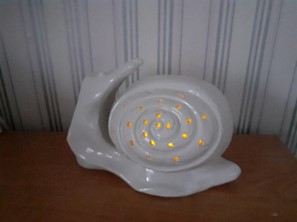Luminaires for interior spaces (Polímita de Cuba) produced from porcelain technology at Gzhel University.
##plugins.themes.bootstrap3.article.main##
Abstract
The article shows the results obtained by creating in the ceramics workshop of the Gzhel University a series of three decorative lamps for interior spaces, inspired by the POLIMITA mollusk from Cuba, as well as the design solution that we assumed for the lampshade of the lamp taking into account that it is made of porcelain, and the different ceramic finishing techniques with low reliefs that allow lighting to be achieved with the appropriate parameters.
##plugins.themes.bootstrap3.article.details##

This work is licensed under a Creative Commons Attribution-NonCommercial-ShareAlike 4.0 International License.
- Attribution — You must give appropriate credit , provide a link to the license, and indicate if changes were made . You may do so in any reasonable manner, but not in any way that suggests the licensor endorses you or your use.
- NonCommercial — You may not use the material for commercial purposes .
- No additional restrictions — You may not apply legal terms or technological measures that legally restrict others from doing anything the license permits.
- ShareAlike — If you remix, transform, or build upon the material, you must distribute your contribution under the same license as the original. NOTE: This point applies to numbers 1 to 20 of the magazine with the previous CC-BY-NC-SA 4.0 license. Does not apply to the new CC BY-NC 4.0 license from Volume 11, Number. 21 (2024).
References
Паррадо Крус Гладис (2006г) " Технологические основы керамики ". Издания Prensa Latina, Куба, 125c .
Графтон К. Анималистика (2018). Образы & фантазии. – М.: КоЛибри. – 144 с.
Мороз И.И. (1984.) Технология фарфорово-фаянсовых изделий: Учебник для техникумов. – М.: Стройиздат, 334 с., ил.
























